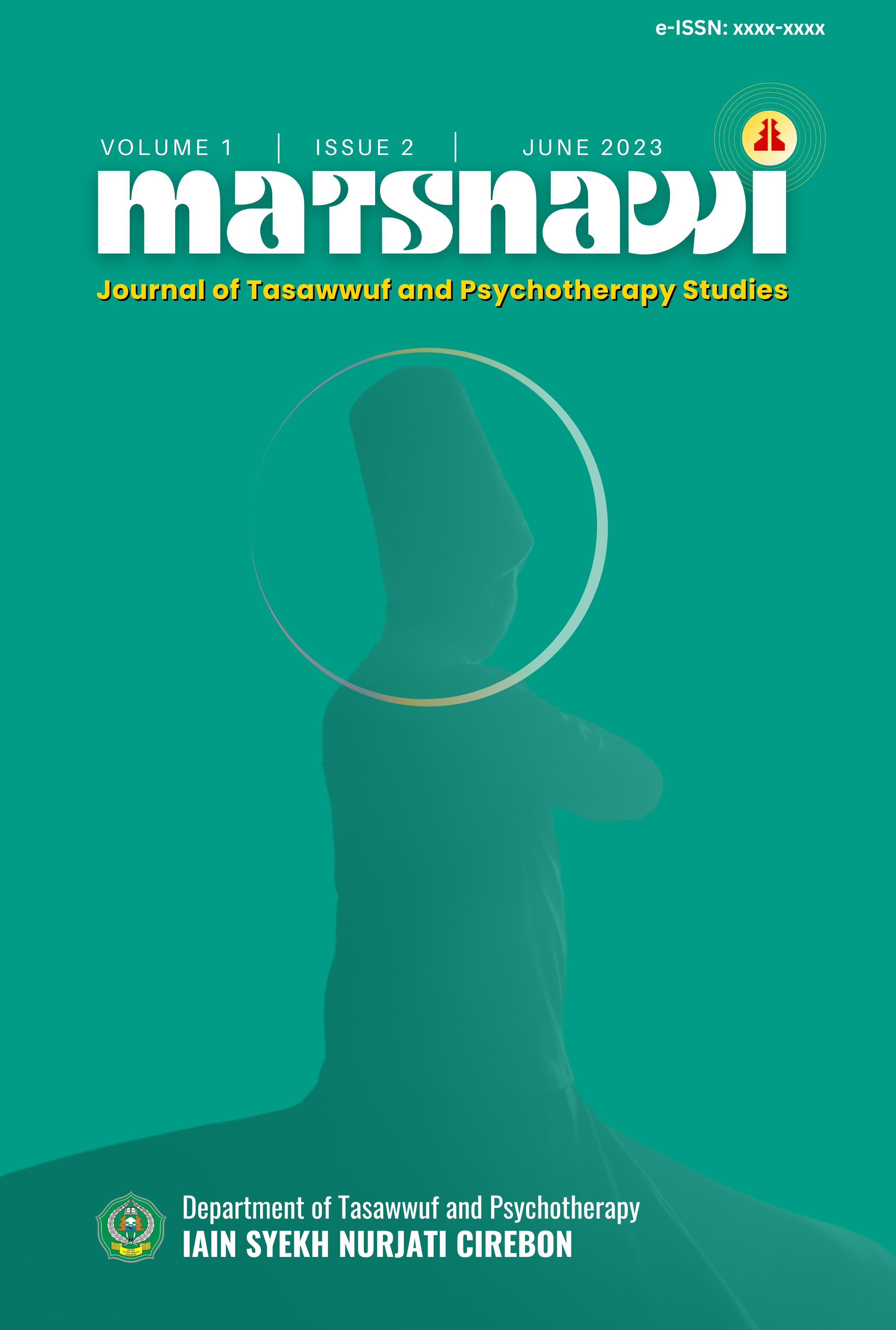TAZKIYATUN NAFS BI AL-QUR’AN: UPAYA PENYEMBUHAN PENYAKIT JASAD DAN ROHANI DI YAYASAN REHAB HATI CIREBON
DOI:
https://doi.org/10.24235/34emwy20Keywords:
Tazkiyatun nafs, physical disease, spiritual disease, rehab hati foundation CirebonAbstract
Tazkiyatun Nafs essentially involves the purification of the soul and heart from various sins and reprehensible traits that contaminate them. The process aims to enhance the quality of the soul and heart by cultivating praiseworthy attributes approved by Allah SWT, as well as positive potentials within oneself through mujahadah, worship, and other virtuous actions. As a result, the heart and soul become clean, healthy, and of high quality. From this purified heart and soul, praiseworthy traits and behaviors can emerge. A peaceful and tranquil heart contributes to the stability of both physical and spiritual health. Conversely, a heart that lacks tranquility and peace can trigger reprehensible traits and lead to spiritual diseases, which in turn can affect physical health. This article discusses how tazkiyatun nafs, particularly through the Qur'an, relates to the healing of both physical and spiritual ailments at the Rehab Hati Foundation in Cirebon. The Qur'an, being the word of Allah, is the primary source of law for Muslims, and its authority for the well-being of the ummah is unquestionable. Data and information were collected through observation, interviews, and documentation, as well as from literature, including books and other scholarly works.
Downloads
References
Alishan, O. (2004). Terapi Sufi. Pustaka Sufi.
Arni. (2021). Implementasi Ruqyah Syar’iyyah Sebagai Alternatif Psikoterapi dalam Kajian Psikologi Islam. UIN Antasari, 9 no.1.
Asiyah, S. (2022). Observasi. Penulis.
At-Thabrani. (n.d.). Al-Mu’jam as-Shaghir No. 830.
Atsir, I. (n.d.). An Nihayah fi Gharibil Hadits 3/254.
Duwiyanti. (2008). Terapi Ruqyah Syariyyah untuk Mengusir Gangguan Jin (Studi KAsus di Baitur Ruqyah Asy Syar’iyyah Kotagede Yogyakarta). UIN Sunan Kalijaga Yogyakarta.
Hawari, D. (2001). Manajemen Stres Cemas dan Depresi. FKUI.
Indunissy, N. Al. (2021). Company Profile 2021-2026. Yayasan Rehab HAti.
Jalal, A. A. (2022). Wawancara. Pembina Yayasan Rehab Hati Cirebon.
M’asum, M. A. (2020). Implementasi Sufi Healing Pada Era New Normal Covid-19 dalam Menjaga Kondisi Homeostatis tubuh masyarakat: Studi Analisis di Desa Kayen Bandarkedungmulyo Jombang Jawa Timur. Murabbi: Jurnal Pendidikan.
Muhtarom. (2021). Konsep Tazkiyatun Nafs dalam Al-Qur’an Surat Al-‘Ala Ayat 14-15 dan Surat Asy-Syams Ayat 9-10 (Studi Kitab Lathoiful Isyrakiya Imam Al-Qusyairi). Purwokerto.
Mulyana, D. (2001). Metodologi Penelitian Kualitatif Paradigma Baru Ilmu Komunikasi dan Ilmu Sosial Lainnya. Remaja Rosdakarya.
Sahih Bukhari dan Muslim No. 5745 dan 2194. (n.d.).
Sahih Muslim No. 2202. (n.d.).
Said, A. (n.d.). Hadits Riwayat At Tirmidzi.
Sakhih Bukhari Muslim 3292 dan 5747. (n.d.).
Sakhih Bukhari Muslim No. 5742. (n.d.).
Sugiyono. (2018). Metodologi Penelitian Kualitatif Kuantitatif. Alfabeta.
Syukur, A. (2011). Sufi Healing; Terapi dalam Literatur Tasawuf. Walisongo Press.
Zaadul Ma’aad 4/170. (n.d.).
Downloads
Published
Issue
Section
License
Copyright (c) 2023 Matsnawi: Journal of Tasawwuf and Psychotherapy Studies

This work is licensed under a Creative Commons Attribution-NonCommercial 4.0 International License.








